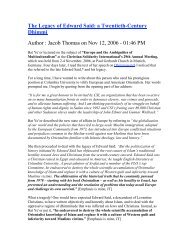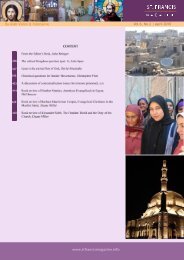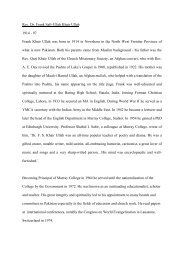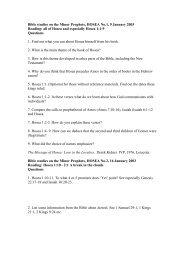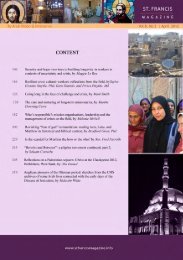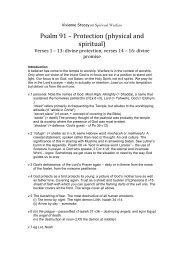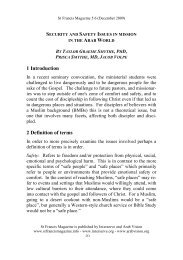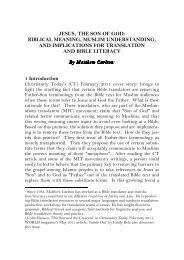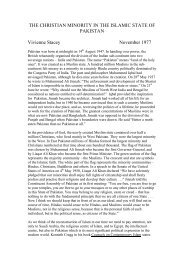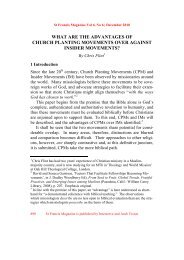download the pdf - St.Francis Magazine
download the pdf - St.Francis Magazine
download the pdf - St.Francis Magazine
You also want an ePaper? Increase the reach of your titles
YUMPU automatically turns print PDFs into web optimized ePapers that Google loves.
<strong>St</strong> <strong>Francis</strong> <strong>Magazine</strong> Vol 8, No 4 | August 2012<br />
by Travis and Travis (2005: 407). Higgins (in Corwin et al. 2007:<br />
10) hints at such an approach when noting how <strong>the</strong> Psalms utilise<br />
non-Jewish forms and concepts and ‘Yahweh-ise’ <strong>the</strong>m, but sees it as<br />
a work external to <strong>the</strong> canon and <strong>the</strong> church.<br />
What, though, if subversive fulfilment is kept within <strong>the</strong> church –<br />
indeed, what if it is seen as an inherent and unavoidable aspect of<br />
being church, at least as church is understood in any localised,<br />
earthly sense The result will ‘provincialise’ churches, to adopt<br />
Chakrabarty’s postcolonial reading of ‘Europe’ (here meaning <strong>the</strong><br />
categories and concepts of political modernity), such that “[n]o<br />
concrete example of an abstract can claim to be an embodiment of<br />
<strong>the</strong> abstract alone.” (Chakrabarty 2007: xii) Two qualifiers are required.<br />
First, <strong>the</strong> church of Jesus Christ is an embodied heavenly<br />
and earthly reality, not an abstract concept, albeit with its locus at<br />
this present time around its heavenly Lord. Second, <strong>the</strong> word<br />
‘alone’ in <strong>the</strong> above quotation has to do a dual work, referring both<br />
to <strong>the</strong> mixed nature of any church as it continually struggles with<br />
its own local idolatrous syncretism prior to <strong>the</strong> eschaton and to <strong>the</strong><br />
need for every group of believers to relate in a real manner with<br />
o<strong>the</strong>r believers – all o<strong>the</strong>r believers – and not to see <strong>the</strong>mselves as<br />
self-contained. Both Corwin (2007: 54-55) and Waterman (2007:<br />
59) question rightly <strong>the</strong> sufficiency of expecting new believers simply<br />
to figure out Christian discipleship and maturity for <strong>the</strong>mselves.<br />
This challenges churches across <strong>the</strong> C-spectrum and in any setting,<br />
Muslim or o<strong>the</strong>rwise, to seek subversive fulfilment in and of its own<br />
locality. Such strategies would fit better with <strong>the</strong> NT primary emphasis<br />
on believers’ identity in Christ, with ‘insider’ language reserved<br />
for this status, and notions (plural) of extraction seen primarily<br />
in that light (Flint 2010b: 904-906). Churches – plural – toge<strong>the</strong>r<br />
as well as alone are called to exhibit a catholicity, albeit a heavenly<br />
catholicity. There are encouraging signs of plural and reflexive<br />
perspectives entering C5 debates, developments from <strong>the</strong> wider<br />
churches which will enhance and advance insight beyond stagnant<br />
binary oppositions (e.g. Hoefer 2009; Diaz 2010). O<strong>the</strong>r binarybreaking<br />
advances from realms such as glocalisation (Andrews<br />
<strong>St</strong> <strong>Francis</strong> <strong>Magazine</strong> is a publication of Interserve and Arab Vision 492


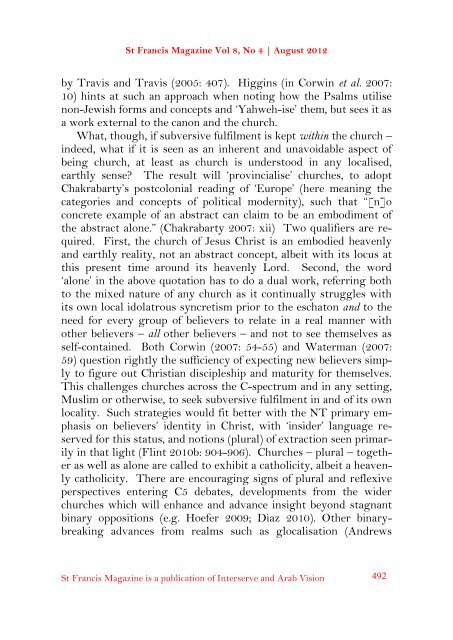

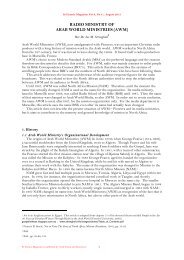
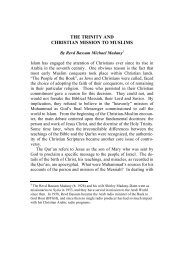
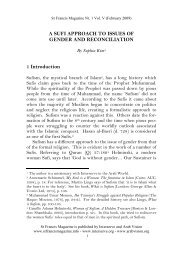
![Reflections on Surah Fatiha and the Lord's Prayer[1] - St.Francis ...](https://img.yumpu.com/49377951/1/184x260/reflections-on-surah-fatiha-and-the-lords-prayer1-stfrancis-.jpg?quality=85)
